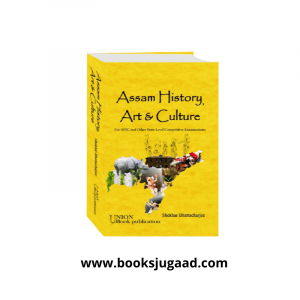History Of Medieval India By Satish Chandra
Original price was: ₹450.00.₹383.00Current price is: ₹383.00.
History Of Medieval India By Satish Chandra
The medieval period of Indian history has often been equated to the period of Turkish and Mughal rule over
the country. This meant that primacy was given to political factors rather
than societal ones. This attitude was also based on the assumption that there
has been little change in Indian society down the centuries. This attitude has
now begun to change. Historians have traced the evolution of tribe-based
society in India to the rise of territorial states, and the gradual formation of
classes and castes within this state system. It has also been shown that with
the growing trend towards ownership of land, and the desire to dominate and
control those engaged in cultivation, a new form of society arose—that is, the
feudal mode.
History Of Medieval India By Satish Chandra
Note: Delivery of this Book takes 3-7 Working Days considering locations.
Delivery Charges: Rs 50 For Prepaid orders via Instamojo
For Cash On Delivery: Additional Rs 40 is charged for handling cash.
If you have online payment facilities, please try to make online payment as it will charge less.
If you have any questions, call or Whatsapp us at 9101633046
Description
History Of Medieval India (New Edition) By Satish Chandra
As a nation grows, it is bound to review its past to see what part of its legacy is
relevant, or an inhibiting factor, for growth. The medieval period of Indian
history has often been equated to the period of Turkish and Mughal rule over
the country. This meant that primacy was given to political factors rather
than societal ones. This attitude was also based on the assumption that there
has been little change in Indian society down the centuries. This attitude has
now begun to change. Historians have traced the evolution of tribe-based
society in India to the rise of territorial states, and the gradual formation of
classes and castes within this state system. It has also been shown that with
the growing trend towards ownership of land, and the desire to dominate and
control those engaged in cultivation, a new form of society arose—that is, the
feudal mode. It has, however, been recognized that there were vital
differences between this social order and the feudal order in Europe.
Without trying to investigate these differences in detail, an attempt has
been made to trace the evolution of social, economic, political and cultural
trends in India from the eight century to the end of the seventeenth century.
It is a daunting task to bring all these aspects together in a single volume. An
attempt has been made in the hope that the summation of the efforts of many
historians during the last four decades to give a new orientation to medieval
Indian history would stimulate public interest, and also put in better
perspective recent controversies regarding the nature of the state in medieval
India, the extent of religious freedom to peoples within it, and the nature of
the economic growth during the period.
A point has been made in the book that the emergence of large empires
followed by their breakdown into smaller components and vice versa did not
necessarily mean economic stagnation and cultural decay. Even when larger
states emerged subsequently, there was often an active interchange between
the new center and the regional states.
Thus, Indian history is not just an endless story of the rise and fall of
empires without any institutional and cultural growth, as Sir Charles Elliot
had postulated in his introduction to the eight-volume History of India as
Told by its Own Historians. Indian history is a much more complex web with
the center of gravity shifting from north to east, or to the south, and back
again, and finally, for a long period the forces of growth triumphing under
the Mughals over the forces of disintegration. The process of disintegration
during the eighteenth century, and a re-integration under vastly different
circumstances under the British and its harmful consequences have not been
touched upon here.
In the end, I would like to thank Orient Longman for bringing out this
work, despite many difficulties.
Satish Chandra
Additional information
| Weight | 0.6 kg |
|---|---|
| Dimensions | 25 × 22 × 3 cm |
-
- Sale!
Success Master CTET Paper-I Class 1 to 5 By Arihant
- Original price was: ₹495.00.₹399.00Current price is: ₹399.00.
- Add to cart
-
- Sale!
A Comprehensive History of Assam By S L Baruah
- Original price was: ₹950.00.₹930.00Current price is: ₹930.00.
- Add to cart
-
- Sale!
Lucent’s GK Subjective
- Original price was: ₹235.00.₹215.00Current price is: ₹215.00.
- Add to cart
-
- Sale!
ABDs Practical Biology For H.S 2nd Year
- Original price was: ₹175.00.₹159.00Current price is: ₹159.00.
- Add to cart
Product Enquiry
You may also like…
-
- Sale!
Assam History, Art and Culture By Shekhar Bhattacharjee For APSC
- Original price was: ₹395.00.₹349.00Current price is: ₹349.00.
- Add to cart

















Leave a Reply